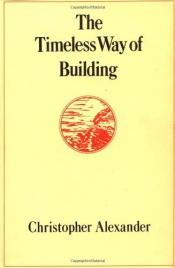The Timeless Way of Building
Blurb
The Timeless Way of Building is a 1979 book by Christopher Alexander that proposes a new theory of architecture that relies on the understanding and configuration of design patterns. Although it came out later, it is essentially the introduction to A Pattern Language and The Oregon Experiment, providing the philosophical background to the Center for Environmental Structure series.It has had a huge influence on creative thinking, especially in the areas of architecture and software design.
In the book, Alexander introduces the concept of the "quality without a name", and argues that we should seek to include this nameless quality in our buildings. Alexander attempts to define the idea by surrounding it with existing concepts that reflect a part of the quality with no name but are not sufficient to define it individually.
The book's format is somewhat unusual. It is written as a long series of italicized headlines followed by short sections providing more detail; as Alexander suggests in the foreword, the 552-page book can be read in an hour by only reading the headlines, which frame the book's argument.

 English
English Español
Español Deutsch
Deutsch










Member Reviews Write your own review
Be the first person to review
Log in to comment